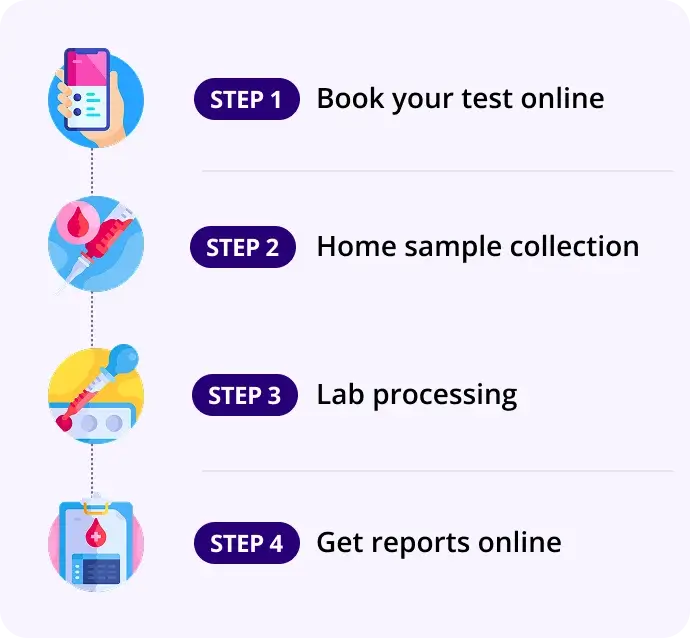Di Hydro Testosterone (DHT)
Report in 24Hrs
At Home
No Fasting Required
Details
Measures total testosterone for assessment of male hypogonadism, PCOS, and infertility.
₹1499₹3200
53% OFF
🧪 What is Dihydrotestosterone (DHT)?
Dihydrotestosterone (DHT) is a potent androgen hormone derived from testosterone by the action of the enzyme 5-alpha-reductase. It is more biologically active than testosterone and binds more strongly to androgen receptors.
❓ Why is DHT Tested?
DHT testing is done to:
- Investigate hormonal causes of hair loss (especially in men)
- Evaluate prostate enlargement or cancer
- Diagnose androgen disorders in males or females
- Monitor 5-alpha-reductase inhibitor therapy (e.g., finasteride for hair loss or prostate treatment)
- Assess virilization or hirsutism in females
- Explore delayed or precocious puberty
📊 Normal Ranges of DHT
Group | Normal DHT Levels |
|---|---|
Men (Adult) | 30 – 85 ng/dL (1.0 – 2.9 nmol/L) |
Women (Adult) | 5 – 50 ng/dL (0.17 – 1.7 nmol/L) |
Children | Typically lower; age and sex-dependent |
🔍 Note: Ranges may vary slightly by laboratory.
🧬 Overview of How DHT Works
- Produced in: Skin, liver, prostate, adrenal glands, hair follicles
- Converted from: Testosterone via 5-alpha-reductase
- Role in Males:
- Development of male genitalia during fetal life
- Growth of facial and body hair, deepening of voice, and prostate development during puberty
- Role in Females:
- Normally present in small amounts
- Excess levels can lead to hirsutism, acne, and menstrual irregularities
📈 Interpretation of DHT Levels
DHT Level | Interpretation |
|---|---|
🔺 High DHT | - Male-pattern baldness (androgenetic alopecia) |
🔻 Low DHT | - 5-alpha-reductase deficiency |
🧠 Associated Organs and Conditions
Organ/Structure | DHT Impact / Related Conditions |
|---|---|
Hair follicles (scalp) | Androgenetic alopecia (male pattern baldness) |
Prostate gland | Benign prostatic hyperplasia (BPH), prostate cancer |
Skin/sebaceous glands | Acne, oily skin |
Reproductive system | Masculinization, genital development |
Endocrine glands | Hormonal imbalances, adrenal contributions to DHT |
🔄 Related / Follow-Up Tests
- Total Testosterone
- Free Testosterone
- 5-alpha-reductase activity
- LH & FSH (Luteinizing Hormone, Follicle Stimulating Hormone)
- DHEA-S (Dehydroepiandrosterone sulfate)
- Estradiol
- Prolactin
- Prostate-Specific Antigen (PSA) — if prostate-related concerns
- Pelvic/Scrotal Ultrasound or MRI — in case of structural concerns
📝 Summary
Parameter | Summary |
|---|---|
What | DHT is a powerful androgen derived from testosterone. |
Why | To evaluate hair loss, prostate issues, hormonal disorders in men and women. |
Normal Range | Men: 30–85 ng/dL; Women: 5–50 ng/dL |
High Values | May indicate androgen excess (e.g., BPH, baldness, hirsutism) |
Low Values | May indicate enzymatic deficiencies, delayed puberty |
Associated Organs | Hair follicles, prostate, skin, adrenal glands, gonads |
Next Steps | Check testosterone, LH/FSH, PSA, or hormonal panel as needed |
How our test process works!

